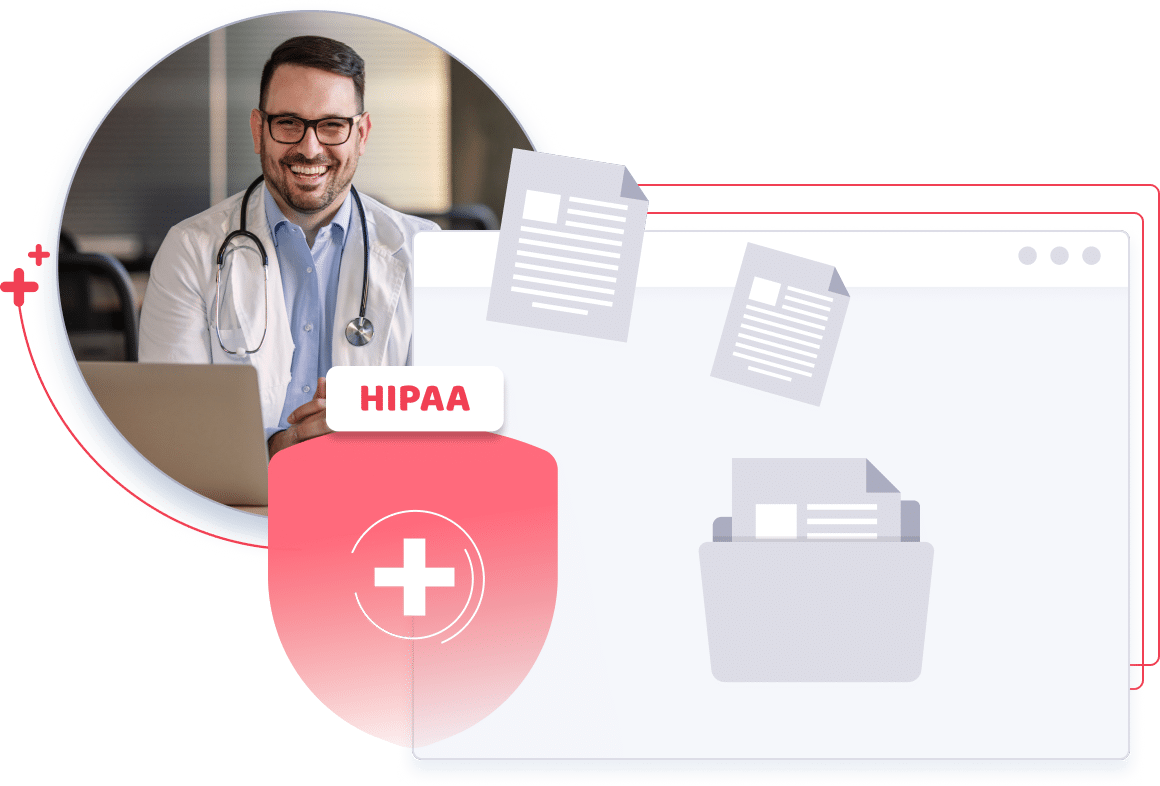Clarity Clinical Documentation
AI-Powered Fax Intelligence. Smarter Faxing. Faster Care.
Clarify How You Work with Patient Data
You’ve got payroll to meet. Bills to pay. Equipment to buy. And despite integrating that new EHR into your workflow, your office staff still processes the bulk of your medical faxes by hand. But don’t hit that panic button just yet. That direct secure messaging address that came with your EHR is your ace in the hole.
Clarity Clinical Documentation™ needs only the DSM address to streamline the processing of medical faxes and automatically route data to the appropriate patient record within the EHR. Faxes received through eFax® can be seamlessly directed to the EHR as a Continuity of Care Document (CCD) using a Direct Secure Message. Clarity leverages proprietary Natural Language Processing (NLP) and Artificial Intelligence (AI) to autonomously extract essential patient demographics from the fax and convert them into a structured CCD format.

A Truly Customizable Solution
Clarity CD is an intelligent and seamless solution that efficiently routes medical record faxes to the appropriate patient record within your EHR. Our advanced system effortlessly handles structured and unstructured clinical data, including text, handwriting, and fax images, skillfully matching them to the corresponding patient records.
Powered by state-of-the-art NLP and AI technologies, Clarity CD extracts critical patient demographics precisely, automatically populating the information into a structured Continuity of Care Document. The processed data is seamlessly routed to your EHR via Direct Secure Messaging, ensuring smooth and secure integration. Clarity CD serves as a customizable solution to automatically extract and route data from unstructured documents into corresponding patient records.

Why Choose Clarity CD
Clarity CD is designed to work with a wide range of documents and images, including low-resolution faxes or handwritten data. Ensuring highly accurate extractions of patient demographics from unstructured documents minimizes manual intervention and reduces errors.
Optimize Processes
Boost productivity, efficiency, and cost savings by streamlining manual workflow steps.
Improved Accuracy
Reduce misfiled records. Ensure patient information is consistently accurate and reliable.
Seamless Integration
Keep existing workflows intact. Clarity CD seamlessly fits into your current processes without disruptions.
Focus on Patient Care
Dedicate more time to patient care and less to document processing. Clarity CD takes care of data extraction and entry.
Regulatory Compliance
Stay compliant effortlessly. Fewer errors mean fewer compliance issues.
The Clarity CD Advantage
Faxes are the primary form of information exchange. There are over nine billion fax pages exchanged each year in healthcare. These documents are static, unstructured documents requiring data entry to process. The average cost of processing a fax page is $6 to $8. This expensive and inefficient workflow leads to longer prior authorization processing and provider and patient dissatisfaction.
With Clarity CD, unstructured documents like PDFs or digital faxes are processed through natural language processing and artificial intelligence to output structured, actionable data that can be imported into an EHR or payer system. The structured data is sent via FHIR or Direct Secure Messaging, highlighting any urgent or priority ePAs to the receiving system for quicker results, improving the care team, health plan, and patient experience

Clinical Applications of Natural Language Processing and Machine Learning
-
Shorten time to treatment
-
Optimize clinical workflows
-
Create CCDs from unstructured clinical documents
-
Support population health
-
Improve patient engagement

Clarity CD Industry Use Cases
Clarity CD facilitates inter-provider communication and enables evidence-based healthcare systems to automate decisions. It supports comprehensive documentation for legal records and patient registry functions to help public health agencies efficiently manage and research large patient populations. The comprehensive clinical documents inform the creation of longitudinal patient records (LEPRs) to show healthcare information from all sources for an individual patient. Meanwhile, billing and coding staff can use these comprehensive records to facilitate claim submissions. Common use cases for clinical documentation solutions in the healthcare industry include:

Hospitals and Healthcare Systems
Clarity CD streamlines patient admissions by automating and simplifying paperwork to increase operational efficiency and staff productivity while reducing costly errors. It enables effective care planning with a centralized platform to facilitate interdisciplinary collaboration. Providers can share patient notes and records to ensure everyone on the team has a holistic view of each patient’s history.

Primary Care Practices
Complete clinical documentation allows primary care physicians to monitor their patients throughout the care continuum. Clarity CD facilitates the documentation of preventive care measures and immunizations to support proactive patient health management. It also ensures a seamless and error-free process if a patient needs to transfer records from a different practice.

Mental Health Facilities
Clarity CD leverages robust cloud-based security features to support secure and confidential information sharing among authorized healthcare professionals. By eliminating manual processes, patient information is less likely to be leaked or stolen, which is critical for maintaining patient confidentiality in a mental healthcare setting.

Urgent Care and Emergency Rooms
Time is of the essence in emergencies. Clarity CD enables rapid and accurate documentation of patient information in urgent care scenarios to ensure timely and appropriate treatment — especially when transferring a patient to a different facility or specialist for further care.
